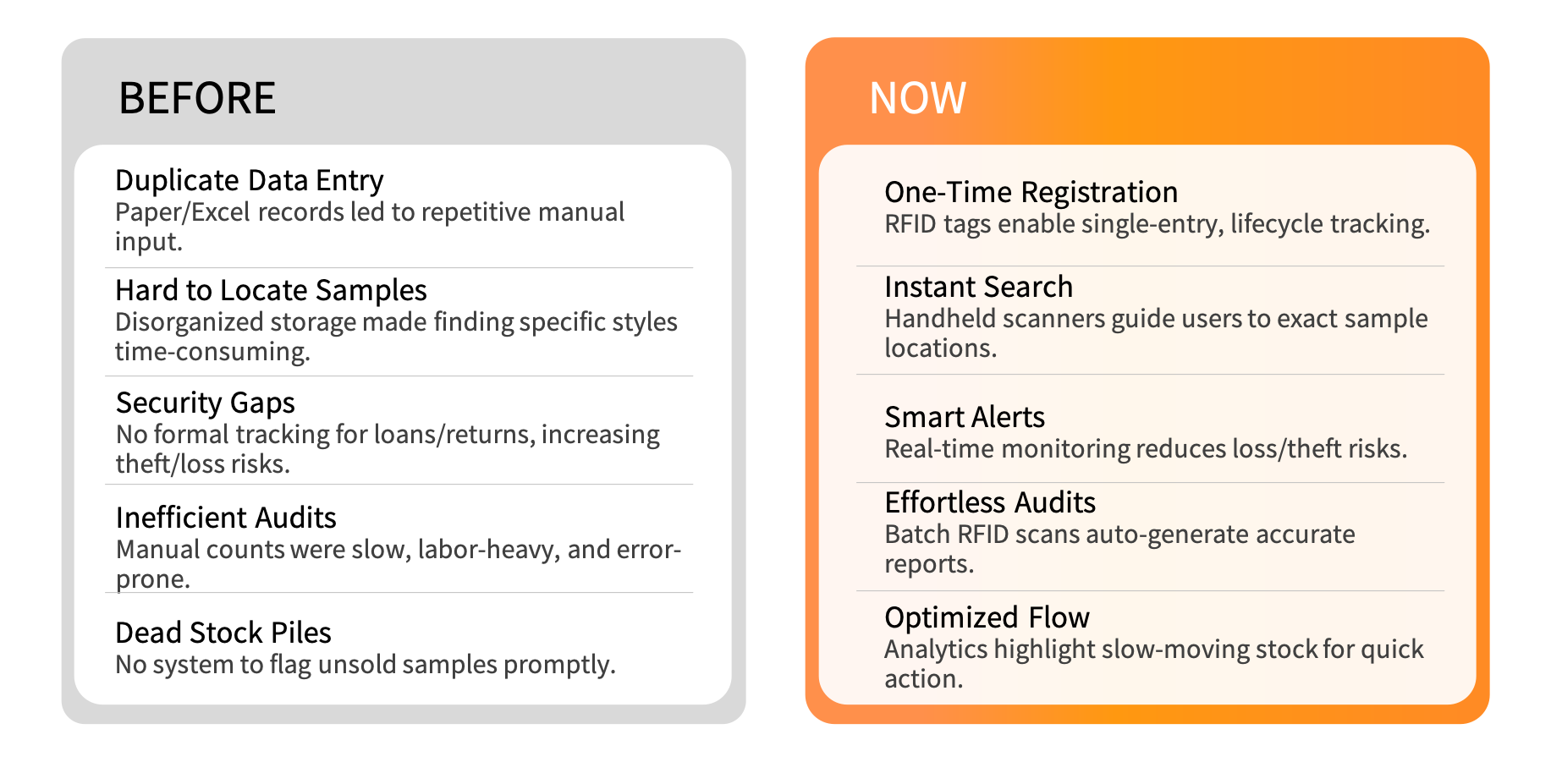Business Challenges
Sample Garment Circulation is Complex and Hard to Track
Outdated Tracking Methods Compromise Data Accuracy
Unregulated Borrowing Creates Accountability Gaps
Missing Status and Location Data Inflate Audit Costs
Sample Garment Circulation is Complex and Hard to Track
Samples frequently move between design, production, and sales, but the lack of systematic tracking causes mismatches between physical items and records. Losses lead to financial costs and delays in product development and customer deliveries.
Outdated Tracking Methods Compromise Data Accuracy
With diverse sample types and frequent batch updates, manual logs or barcode scans fail to sync data in real time. Delayed reporting undermines timely inventory decisions and production planning.
Unregulated Borrowing Creates Accountability Gaps
Poorly monitored loan processes result in overdue returns, mix-ups, or unclear responsibility. Such issues disrupt cross-department coordination and may cause duplicate investments or waste.
Missing Status and Location Data Inflate Audit Costs
Managers lack real-time visibility into sample status (in-stock, on loan, under repair) or location, relying on labor-intensive periodic counts that often diverge from reality.
Solution
Unique sample garment identity & traceability
Link RFID tags to sample garment data for accuracy and traceability.

End-to-End Data Infrastructure
Deploy RFID devices across production, warehousing, and retail for seamless coverage.

Smart Data Integration
Develop an RFID sample garment system with core functions such as borrowing,returning,and inventory management















